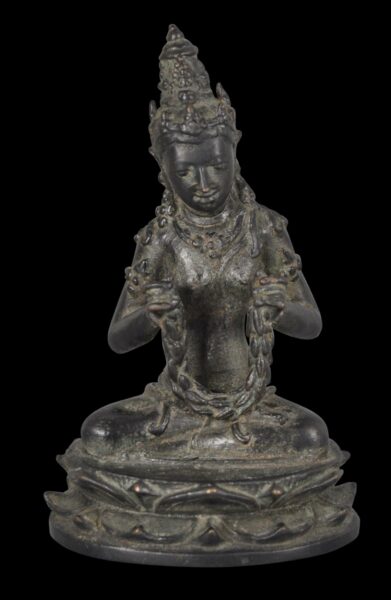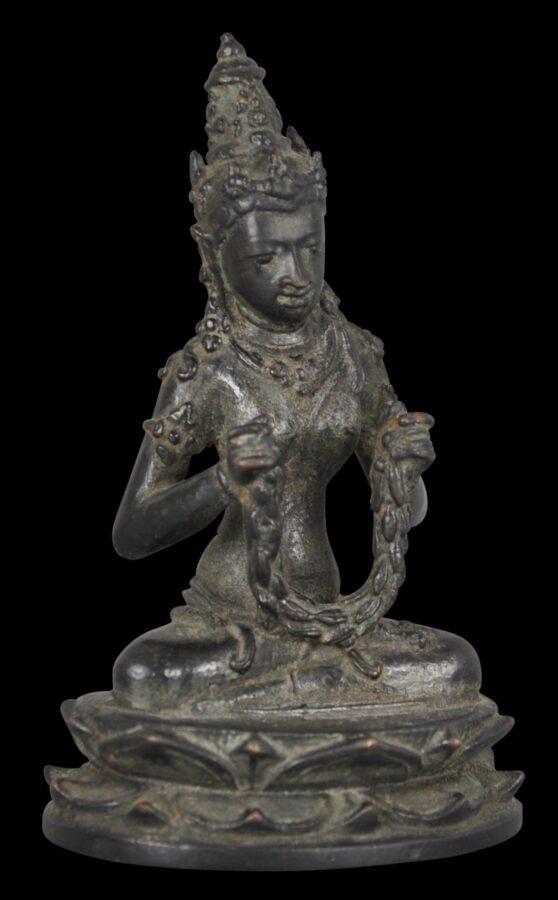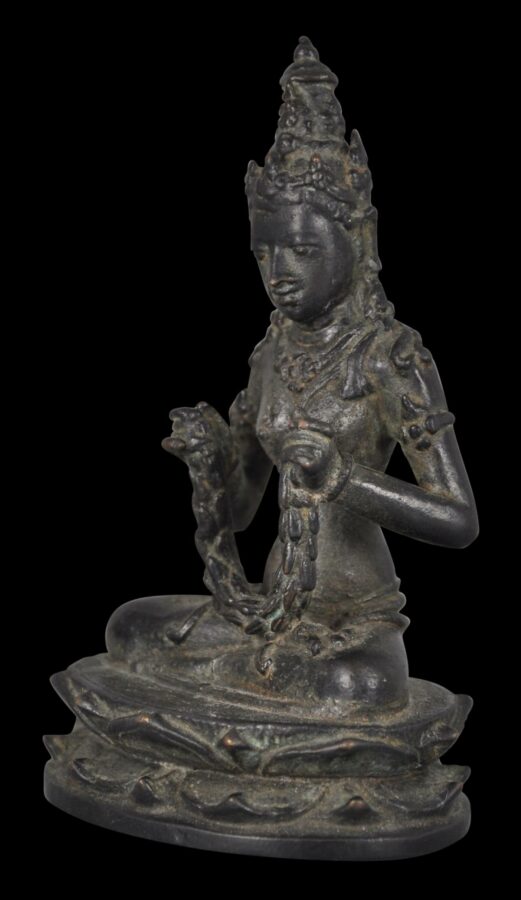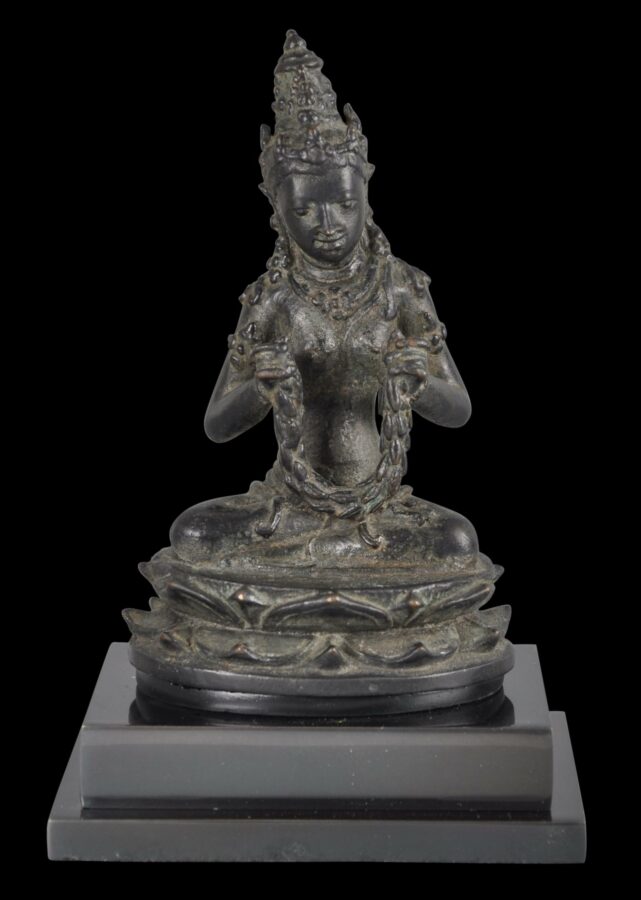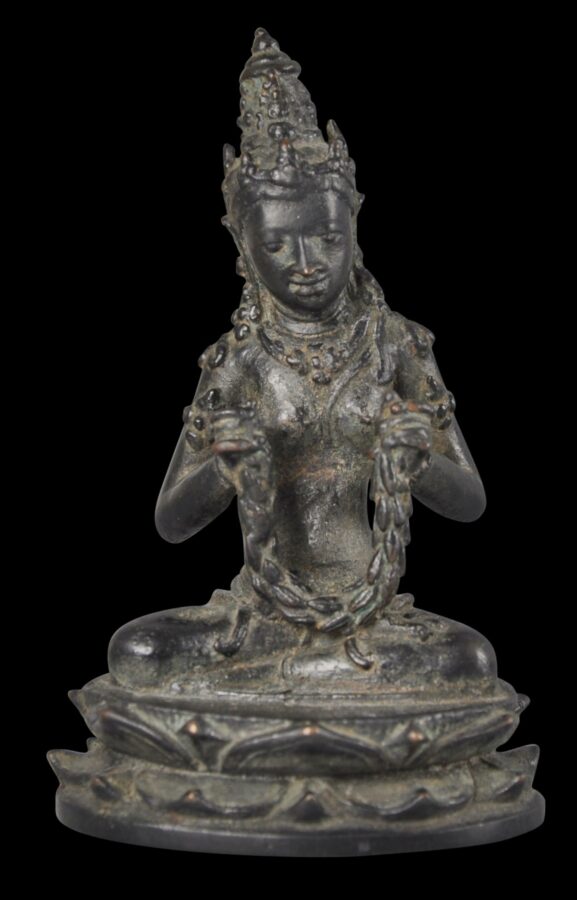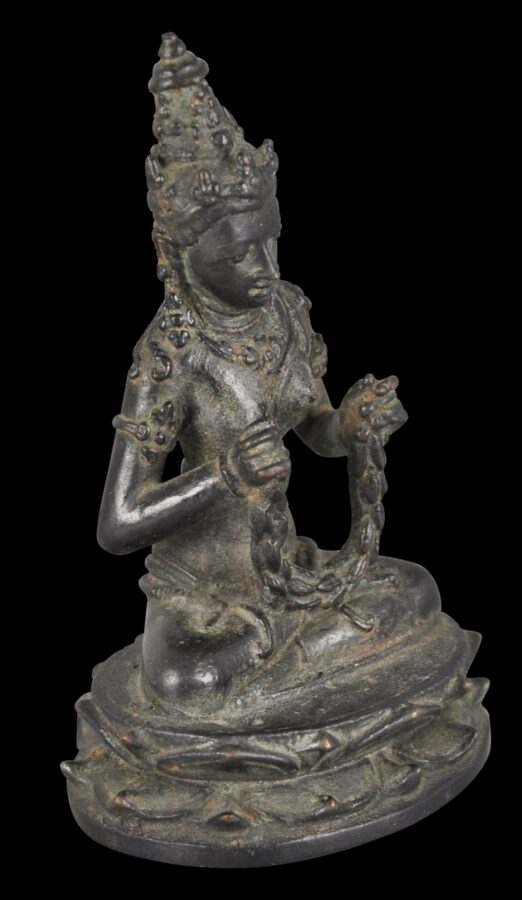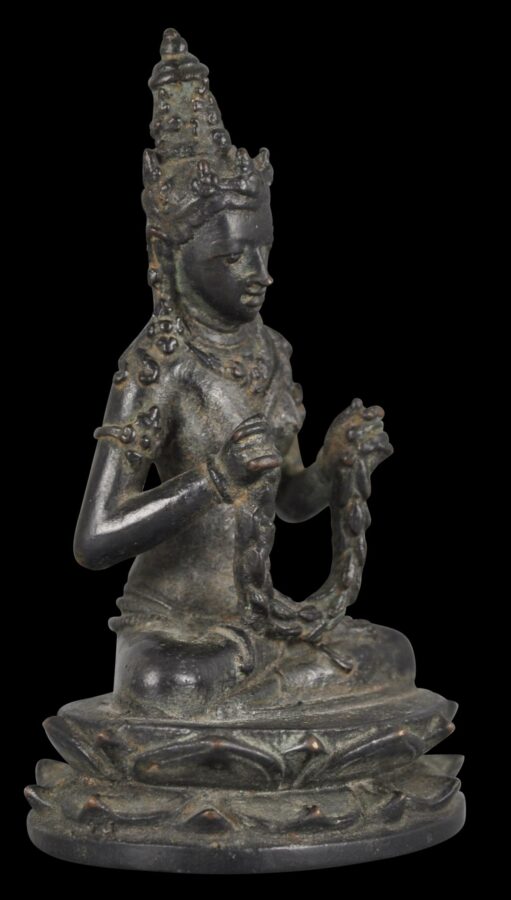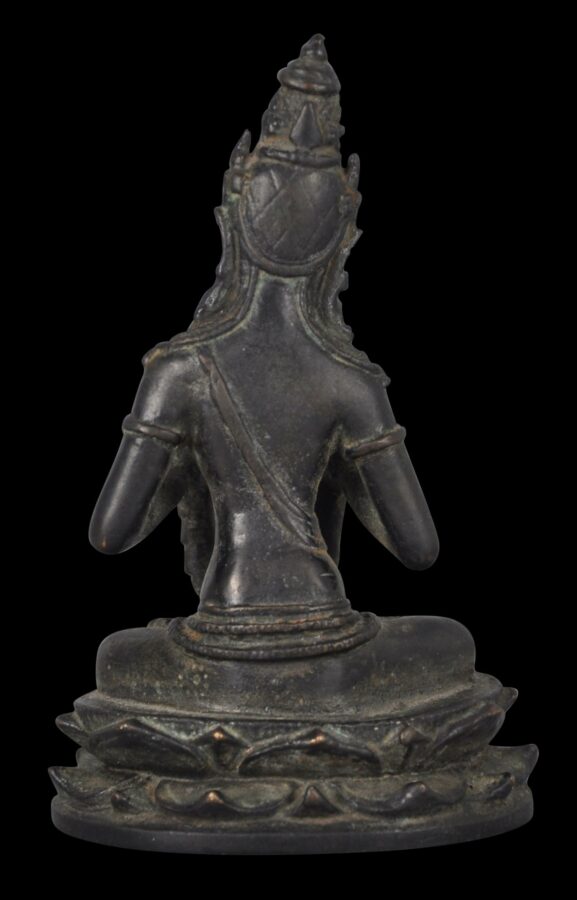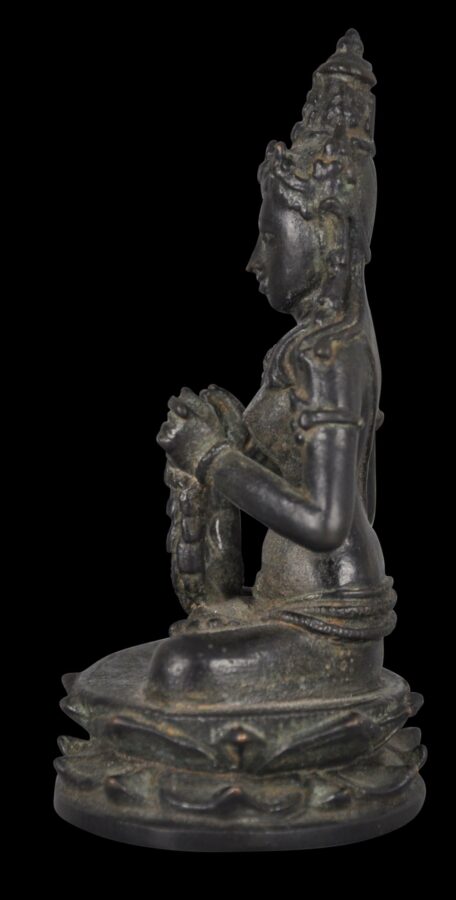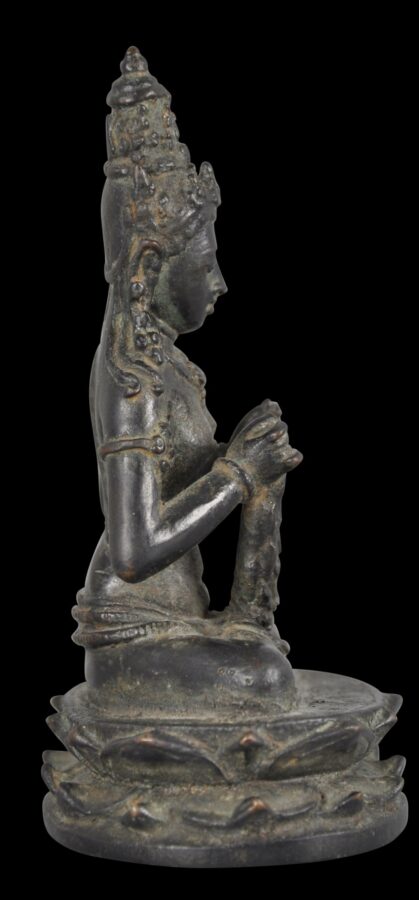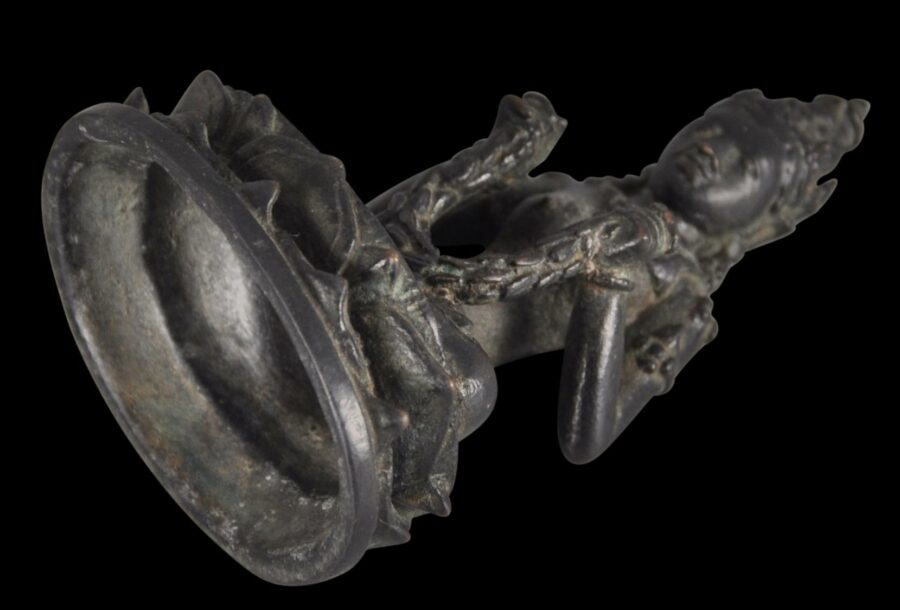Enquiry about object: 9469
Early Javanese Seated Bronze Tantric Buddhist Bodhisattva Figure, possibly Wajrasphota
Central or East Java, Indonesia 10th-11th century
height: 9.8cm, width: 6cm, depth: 4.7cm, weight (without stand): 253g; height with stand: 12.1cm
Provenance
private collection, London, UK. By repute, formerly in a royal collection, Central Java.
This very fine, cast and chiselled bronze figure of a bodhisattva, seated cross-legged in sattvaparyangka style, on a double-lotus throne is from Central Java and dates to the 9th-10th century.
The figure leans slightly forward and to its right and with a subtle twist to the torso. It is finely modelled with a high headdress with five leaves, a dhoti, and ample jewellery. Elements show influence from South Indian Pallava style (7th-9th century).
The figure holds a finely-modelled garland between both hands. It is possible that what the deity holds is a chain – beautifully depicted as it is – in which case the figure probably is Wajrasphota, the guardian of the west, and so the image would be one of the eight offering deities. A similar example in the National Museum of Indonesia and illustrated in Miksic (2007, p. 252) shows a goddess, seated like the example here but holding a more obvious chain, which is an identifying attribute for Wajrasphota – the word for chain in Sanskrit is sphota.
Should the garland actually be a long stalk of rice being held such that it curves like a garland then the figure could be Sri Devi
See lot 141, Bonhams, New York, ‘Indian, Himalayan & Southeast Asian Art’, March 18, 2013, for a related figure from Java, as well as Miksic (2007, p. 252-254).
The figure relates closely to a group of small, fine bronzes found in 1913 in Nganjuk, in eastern Java and which date to the 10th-11th century. Each bronze was small but their number was not and may have numbered as many as 90 separate bronzes. Some were sold to private collectors but most of the horde entered the collection of the present-day National Museum of Indonesia. The Nganjuk bronzes were found in the desa Candi Raya near Nganjuk. Together, most seem to have formed a Vajradhatu or diamond matrix mandala or a magic circle, and so most comprised a set of bronzes rather than a random collection. Since this time, bronzes found in Java that are of similar form and dimensions have been known as being in the Nganjuk style, and other examples of sets of small bronzes that also would have formed part of mandala have been found, including for example a set in the Metropolitan Museum of Art (see Lerner & Kossak, 1991, p. 198).
Each of the Nganjuk bronzes seems to have been cast with an armband at the elbows, whereas the bronze here has an upper armband and wrist bands. Accordingly, and given the headdress, the styling of the face and the curvaceousness of the lotus petals of the throne, it is likely that the bronze here has a slightly earlier dating and probably comes from Central rather than Eastern Java. In any event, bronzes from the two periods and regions should not be seen as having a distinct break but rather are on more of a continuum. Indeed the slender limbs of the figure here suggests a dating towards the end of the Central Java period and possibly the early years of the East Java period.
The figure comes with a high-quality, custom-made, black display stand. It has a splendid, dark patina and is without losses or repairs.
References
Fontein, J., et al, The Sculpture of Indonesia, National Gallery of Art, Washington, 1990.
Lerner, M. & S. Kossak, The Lotus Transcendent: Indian and Southeast Asian Art from the Samuel Eilenberg Collection, The Metropolitan Museum of Art, New York, 1991.
Lunsingh Scheurleer, P., & M.J. Klokke, Ancient Indonesian Bronzes: A Catalogue of the Exhibition in the Rijksmuseum Amsterdam with a General Introduction, E.J. Brill, 1988.
Meulenbeld, B.C., et al, Budaya Indonesia: Arts and Crafts in Indonesia, Tropenmuseum, 1988.
Miksic, J., Icons of Art: The Collections of the National Museum of Indonesia, BAB Publishing, 2007.


